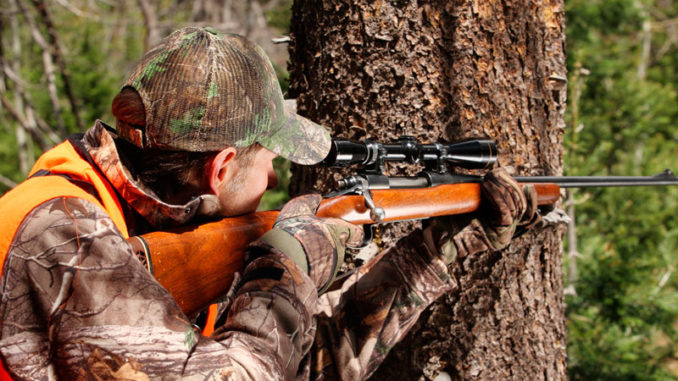
Hunting season is right around the corner, and every year, hunters are injured or killed because of equipment failure or lack of safety equipment. Checking your equipment is the first step toward a successful and safe hunting season. While we’re busy sighting in rifles, practicing with the bow and planting food plots, let’s not forget to do some of the other things we don’t always think about or want to think about. Here’s the checklist.
- If you have liability insurance for your property or club, make sure it is in effect and covers any new members. Does the policy cover any new property acquired during the offseason? Are new members listed on the policy? Has anything changed in the nature of the club that would affect the policy coverage (i.e., pond fishing, ATV use, guest policy, camping, etc.)?
- Do you have or need ATV/SxS/UTV coverage? Homeowner’s liability coverage generally does not provide coverage for recreational vehicle accidents occurring away from the property where the covered resident is located. If you are transporting other people or allowing other people to run your bike, you may want to look into liability coverage.
- Check lights, safety chains and hitch on your truck, boat and ATV trailer.
- Inspect stands for defects, particularly if you invite guests to hunt. You want to make sure that ladders, straps, etc., are secure and in good shape. Check your lock-ons and replace any straps that are more than a year old. Metal ladder stands rust, so inspect for weak spots. Trees grow and move and may compromise a stand.
- Inspect your safety harness. Does it still fit? Check for tears, rips or other defects in the material.
- Inspect all climbing and harness safety lines. Squirrels love the chew them up. Will they support the weight of the heaviest person who will use the stand? When in doubt, change them out.
- Inspect ATV bridges for structural issues.
- Make sure any new stands comply with camp rules regarding location and line-of-sight issues. If someone put up a new stand and is walking in and out from a new direction, it’s good to make sure everyone knows about it.
- If you are hunting public land, you are required to wear hunter orange. According to the Louisiana Department of Wildlife and Fisheries, during the open firearms season for deer, any hunter in possession of buckshot, slugs, a primitive firearm or centerfire rifle must display on his/her head, chest and/or back a minimum of 400 square inches of hunter orange or pink. Hunter orange is a good idea no matter where you hunt during rifle and primitive deer season. You might also consider wearing it during archery season since some crossbows can shoot out to 100 yards or more. Hunting clubs should consider a policy of requiring it or not, just so everyone is on the same page.
- Check your boat registration, life jackets, running lights, kill switches, etc. in any boats you are using.
- Inspect climbing stands for weak spots, connecting bolts, washers, nuts, straps, welds, etc. Even aluminum stands can erode and deteriorate if left outdoors for prolonged periods. Sometimes the tree spurs get dull and may have be re-sharpened. Check the paint and finish and touch-up as necessary. If it has a mesh or fabric seat, check for tears or weakness in the fabric. Check the bottom boot straps and the rope that connects the top and bottom to make sure they can withstand multiple trips up and down trees. Even if you have used the same tree for years, make sure it has not been compromised by storms, boring insects, etc., since the last time you used it.
- Check to make sure you have the licenses and permits you need to hunt your area. WMAs require self-clearing permits. Find out where the permit stations are before the hunt. WMA hunting permits are required for WMA hunters age 18 to 59. Federal and state duck stamps are required for migratory waterfowl hunting. A Hunter Information Program certificate is required to be on your person at all times while hunting migratory game birds. https://www.wlf.louisiana.gov/page/mandatory-harvest-information-program
- Check your ATV for compliance with WMA rules. Tire size and width are specified. http://www.eregulations.com/louisiana/hunting/wildlife-management-areas/.
- Check your bow limbs, strings and arrows. If the bow string is frayed, change it out. If you shoot carbon arrows, check for any cracks or separation. Throw away any carbon arrows that don’t look perfect. If you have any doubt about an older bow, have it inspected by a reputable bow shop.
- Make sure your gun is legal for the season and area. Lead vs. steel shot? Is your gun truly “primitive?”
- Consider using a pull-up rope for gear and guns, leaving both hands free for safe climbing. If you are already using them, check to make sure that Mr. Squirrel hasn’t chewed it and it is still strong enough to carry the load.
- Make sure someone always knows where you are and when you will be back.
- Get the kids a hunter-safety certificate. Youths must possess hunter-safety certification or proof of successful completion of a hunter-safety course.
- Inspect for wasps and hornets, because guaranteed they will be in those box stands.
Checking and repairing your hunting equipment before something goes wrong will help you enjoy your hunting season this year. Hopefully, some of these reminders will make your season more enjoyable and a lot safer. Good luck!
About the author: John H Smith is an experienced trial attorney. Growing up in Houma, Louisiana, molded an avid outdoorsman. He now lives in St. Amant and works out of his office in Baton Rouge. A personal injury attorney, John’s law firm has a superlative record representing those requiring legal assistance, redressing any number of civil wrongs committed against their life, limb or property. Visit www.smithshanklin.com to learn more.

